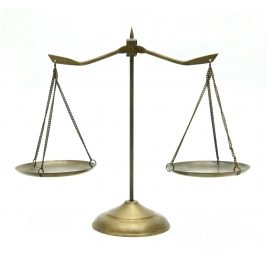The most common type of case a resident of the United States files in civil court that is not connected to a divorce or family law matter involves a personal injury. Because this type of case is so commonplace in the U.S. judicial system, it is important for a person to understand when he or she realistically has a claim that justifies being litigated in a court of law.

Actual Damages
The first test that a person must employ in determining whether or not he or she has a valid case is identifying actual damages. In most situations, a person does not have a valid case if an incident occurred that might result in damages at some future point in time — in the absence of any actual, identifiable damages in the present time.
For example, if an individual is involved in a fender bender car accident as a passenger and walks away with absolutely no personal injuries, that person does not have a valid case. The driver or owner of the motor vehicle that was damaged would have a claim or case, at least for the losses associated with the vehicle damage.
Breach of Duty of Care
In addition to being able to identify actual damages, or injuries, in order to bring forth a valid case, a person also must demonstrate that the person who allegedly caused an accident of some sort had a duty of care to the injured person. A clear example of a duty of care involves the operation of a motor vehicle on a public roadway. A driver has a duty of care to operate a motor vehicle in a responsible manner. If that individual engages in some activity while driving like speeding or texting (or both) and causes an accident, that person has breached a duty of care and is considered negligent.
Negligence is the Cause of Damages
Another test that must be applied when considering whether or not a person has a valid claim or potential lawsuit is confirming that a connection exists between a negligent act (or lack of action, as the situation might suggest) and the damages or injuries.
By way of an example, negligence is the cause of damages when a person breaks a leg as a direct result of a motor vehicle accident caused by another person. On the other hand, there is no connection between a negligent act and damages or injuries when a person is involved in a car accident and then breaks a leg a month later. The contention that a car accident weakened a person’s bones is not likely to fly.
Knowing when to go see a lawyer, like those from Kitchen Simeson Belliveau LLP, can be a little tricky. Addressing an issue when your rights have been violated or when you are owed compensation can mean all the difference in the world. Make sure you are prepared for whatever the world throws at you in the future.



